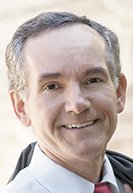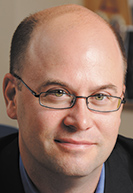Subscriber Benefit
As a subscriber you can listen to articles at work, in the car, or while you work out. Subscribe NowShortly after the controversial Religious Freedom Restoration Act went into effect in Indiana in 2015, the unlawful entry by a serious sex offender statute, which prohibits certain sex offenders from accessing school property, also became law. Now, those two statutes are at odds with each other as the Indiana Court of Appeals decides whether an interpretation of the statute that prohibits three men from going to church constitutes a RFRA violation.
Under the unlawful entry by a serious sex offender statute, Indiana Code 35-42-4-14, offenders convicted of certain sex offenses cannot knowingly or intentionally enter school property without committing a Level 6 felony. The Boone County sheriff determined that statute meant sex offenders in the county, including John Does 1, 2 and 3, could not attend church if their churches offered programs for children at least 3 years old who are not yet in kindergarten. The Boone Superior Court agreed, determining that anytime churches offer such programs, they are considered “school property,” and, thus, are unavailable to the John Does.
But because each of their churches offer children’s programming simultaneously or nearly simultaneously with adult services or Bible studies, the three men told the Indiana Court of Appeals during oral arguments in the case of John Doe, et al. v. The Boone County Prosecutor, et al., 06A01-1612-PL-02741, the sheriff’s letter effectively prohibits them from attending church at any time. The appellate case turns on two central issues that divided counsel for the state and the offenders: whether churches can be considered “school property” and whether the prohibition against the Does attending church violates their rights under RFRA.
According to the ACLU of Indiana legal director Ken Falk, who brought the case on behalf of the sex offenders, the trial court erroneously determined that churches can be considered school property because they are not “owned or rented by” an educational institution, language used in I.C. 35-31.5-2-285, which defines “school property.” Further, that statutory definition does not permit a building to cease to be considered school property when children are no longer present, Falk said, so the trial court erred in determining the Does are only prohibited from attending church when children’s programming is in session.
While deputy attorney general Aaron Craft agreed with Falk on the latter point, he pointed to additional language in the school property statute that defines such property as owned or rented by a “program or service operated to … benefit children … .” Churches that offer programming for kids would qualify as school property under that portion of the statutory definition, Craft said.
 Conkle
ConkleBut Judge Margret Robb pushed Craft on that assertion, telling him that church babysitting services don’t seem to qualify as the “developmental” programs defined in section (D)(iii) of the school property statute. Similarly, Dan Conkle, a constitutional law professor at the Indiana University Maurer School of Law, said the statute defining “school property” is ambiguous as it applies to churches. If the statute were to apply to churches, then it would seemingly ban sex offenders from attending any church at all, because nearly every church offers classes for kids, Conkle said.
While Falk argued his clients’ cases could be won on the issue of the definition of school property alone, he also advanced the argument that the prohibition against the Does attending church is a violation of religious protections under RFRA. That Act prohibits the government from substantially burdening a person’s religious exercise unless it can prove a compelling interest and that the burden is the least restrictive means of advancing that interest.
Here, Craft told the appellate panel the state has a compelling interest in protecting children from being victimized by sex offenders, especially in “safe havens” such as schools and churches. Through the unlawful entry statute, the Indiana Legislature struck a balance between the rights of children and the rights of sex offenders and determined that kids’ rights to be safe trumps offenders’ rights to enter those safe havens, Craft said.
 Garnett
GarnettRichard Garnett, a Notre Dame Law School professor and director of the Notre Dame Program on Church, State & Society, wrote in an email to the Indiana Lawyer that a court would “almost certainly” accept the need to protect children from sex offenders as a compelling interest. But in this specific case, Garnett said the question “is whether the restrictions imposed on the John Does serve or reasonably advance that interest.”
According to Falk, the answer is “no,” as the state has not provided specific evidence that the Does would pose a threat to children if they attended their churches. Conkle agreed, noting the “compelling interest” test must be applied to a particular religious claimant — here, the John Does — so a “general, abstract interest in protecting children from sex offenders” is not enough.
Faced with further questioning from the appellate panel, which also included Chief Judge Nancy Vaidik and Judge L. Mark Bailey, Craft conceded there was no evidence in the record that the Does presented a threat to children at their churches. However, Craft likened the case to the court’s decision in Tyms-Bey v. State, 69 N.E.3d 488 (Ind. Ct. App. 2017), in which the appellate panel determined the government has a compelling interest in a uniform tax system, so RFRA cannot be a defense against paying taxes.
The same logic should apply here, Craft said, because the Legislature chose to categorically prohibit sex offenders from accessing places where they could victimize children. Falk, however, said the categorical approach could not apply because there was not a one-to-one correlation between a religious interest and a state interest. Such a correlation existed in Tyms-Bey because there was no alternative to paying taxes, while, here, there are alternatives to banning the Does from church, Falk said.
Both Garnett and Conkle agreed the alternatives could include policies that focus on the specific presence of children, not the entire church. Similarly, Falk suggested a least restrictive means of protecting children might be to prohibit his clients from entering the areas where children’s programs are held.
But from the state’s perspective, Craft said it would not serve the compelling government interest to allow sex offenders to access the “safe havens” because once a child has been victimized, the damage has already been done. Thus, the only way to prevent that damage is to prohibit the Does from entering churches with children’s programming.
But Bailey said from his perspective, it seemed the state’s argument would affect the rights of not only the sex offenders, but also of their churches, as the state’s position would inhibit the churches’ autonomy to decide who can join their congregations. Conkle agreed with that point, saying the unlawful entry by a serious sex offender statute would have an intrusive effect into churches’ religious freedom if interpreted the way the state advocates.
To that point, Falk noted the leaders of each of the John Does’ churches were aware of their sex offenses and had welcomed them into the congregations. Craft, however, did not specifically address this point in his arguments.
As of Indiana Lawyer deadline, the appellate panel had not yet handed down a decision in the case.•
Please enable JavaScript to view this content.
